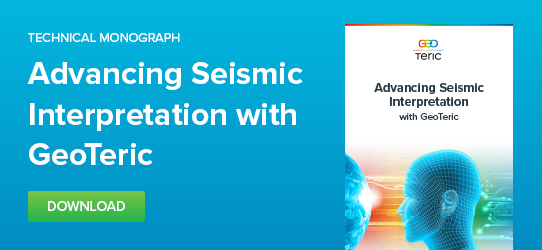

In the previous Geobodies instalment, a geobody was created using a Standard Frequency Decomposition (FD) blend as this technique is useful in identifying subtle changes within a geological feature. In this post, an Adaptive Geobody will be created using a High Definition Frequency Decomposition (HDFD) blend. The matching pursuit techniques used in GeoTeric’s HDFD blending generates frequency decomposition results as close to seismic resolution as possible. This improvement in vertical/temporal resolution is traded off in terms of accuracy of frequency resolution.
Watch the Video Tutorial
Frequency Decomposition vs High Definition Frequency Decomposition
The benefits of having improved temporal resolution allows for more accurate Gross Rock Volume calculations and subsequently more accurate STOOIP/GIIP calculations.
By accurately positioning events in the vertical sense and removing the vertical smearing effect that is so commonly associated to frequency decomposition techniques allows for a greater understanding of the geological depositional system.
This is better expressed by the imagery below:



Using the Geobody Metric function and the STOOIP Calculator in GeoTeric it is possible to get quick volumetric estimates for any Adaptive Geobody.



